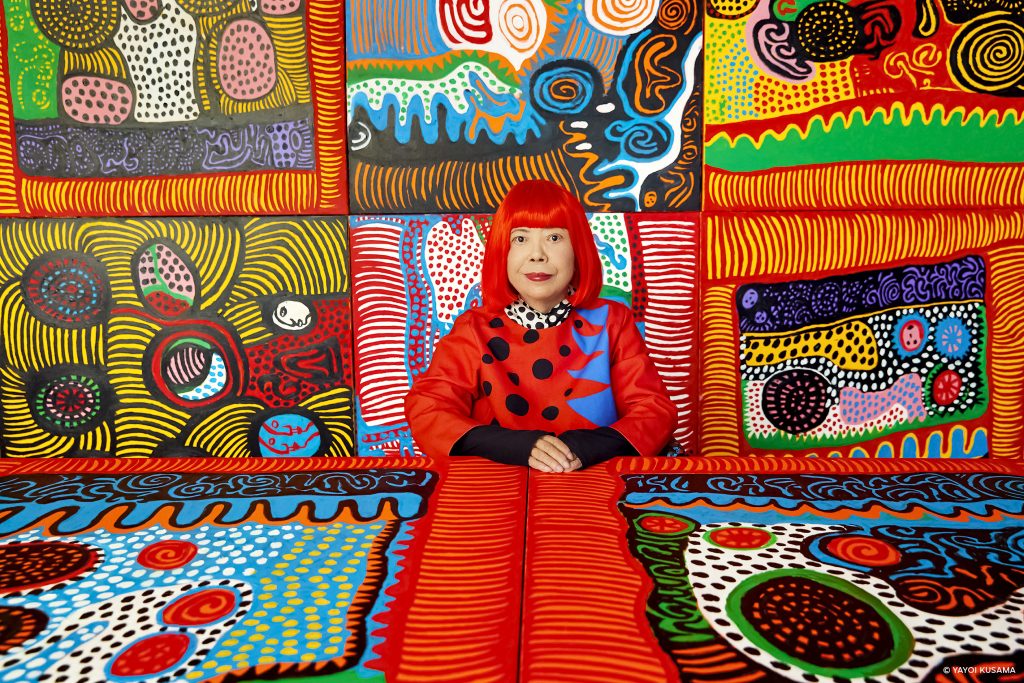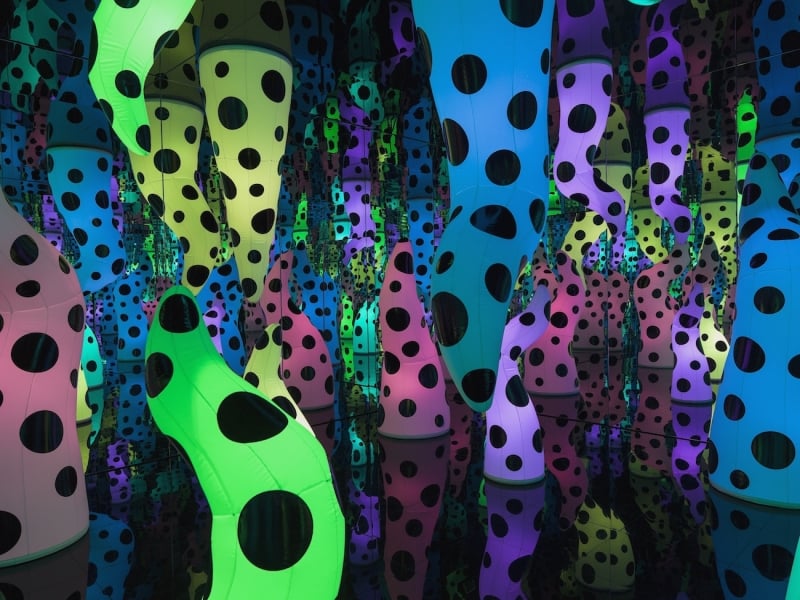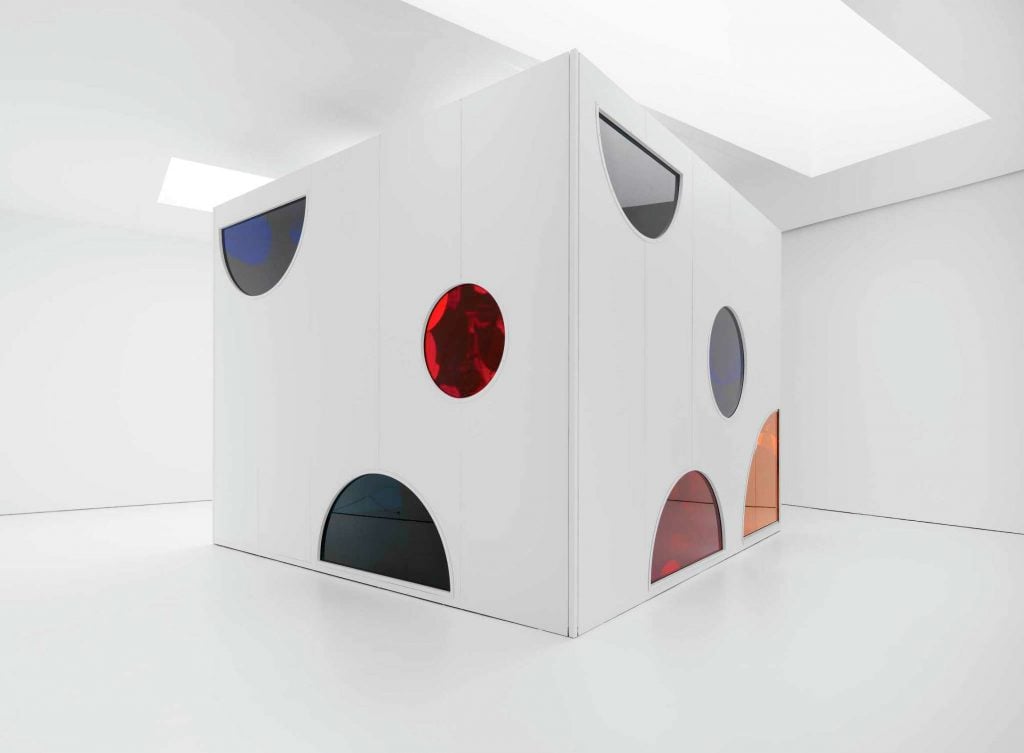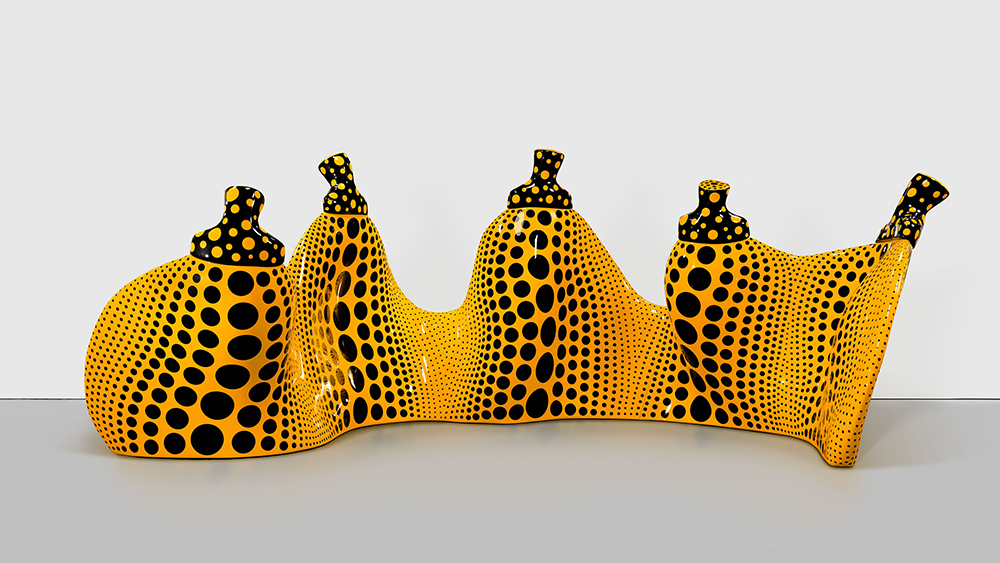Museums & Institutions
Yayoi Kusama Apologizes as Her Previous Racist Writings Surface, Clouding Her New San Francisco Museum Show
The artist's writing is coming under closer scrutiny on the occasion of her SFMOMA show.

The artist's writing is coming under closer scrutiny on the occasion of her SFMOMA show.

Sarah Cascone

Japanese artist Yayoi Kusama has apologized for writing offensive, racist descriptions of Black people in her 2003 autobiography Infinity Net.
“I deeply regret using hurtful and offensive language in my book,” Kusama told the San Francisco Chronicle, in a statement sent by the San Francisco Museum of Modern Art, where the artist opened her first Northern California solo show this past weekend. “My message has always been one of love, hope, compassion, and respect for all people. My lifelong intention has been to lift up humanity through my art. I apologize for the pain I have caused.”
In the book, Kusama wrote that when she saw photos of Black people, she found them “exotic,” adding that she “envisioned America as a land full of these strange, barefooted children and virgin primeval forests.”
In a sentence omitted from the English translation but present in the original Japanese edition, she complained that New York’s Greenwich Village, where she once lived, had become a “slum” thanks to “black people shooting each other out front, and homeless people sleeping there.”

Yayoi Kusama, LOVE IS CALLING (2013). Photo courtesy David Zwirner, New York; Ota Fine Arts, Tokyo/Singapore/Shanghai; Victoria Miro, London/Venice. ©Yayoi Kusama.
The opening of a Kusama exhibition is typically an exuberant event. The 94-year-old artist has become a major attendance draw in recent years, staging sold-out museum exhibitions that attract long lines of selfie-seeking fans eager to experience—and take photos of—her “Infinity Mirror Rooms,” chambers with mirrored walls and ceilings typically hung with starry lights that seem to float in the air.
But while tickets for the first two months of “Yayoi Kusama: Infinite Love” at SFMOMA are already sold out, the exhibition has also been drawing negative attention due to racism in the artist’s book and other writings.
In June, Hyperallergic detailed various problematic references to Black people in the artist’s new survey publication Yayoi Kusama: 1945 to Now (2023). There’s a mention of a “WILD-looking, hairy, coal-black savage” in a script for a 1971 play, and descriptions of how Black characters smelled and what their genitalia looked like in her 1984 novel The Hustler’s Grotto of Christopher Street (details not provided for people of other races).

Yayoi Kusama, Dreaming of Earth’s Sphericity, I Would Offer My Love (2023), the artist’s newest “Infinity Mirror Room,” is on view at the San Francisco Museum of Modern Art. Photo ©Yayoi Kusama.
If the art world had turned a blind eye to this troubling tendency to this point—perhaps due in part to Kusama’s well-documented mental illness—that may be changing. Ahead of SFMOMA exhibition, the San Francisco Chronicle published an opinion piece calling Kusama’s “racism problem” “the elephant in this polka-dotted room,” and criticizing the museum for staging the show without addressing the issue.
“SFMOMA stands firmly against all anti-Black sentiments,” director Christopher Bedford said in a statement provided by email. “Our effort is not to edit figures out of art history based on misdeeds but rather to present a fully dimensional, complex social art history that is unflinching in the way it analyzes the flaws inherent in individual makers. SFMOMA is currently organizing an internal program for November to support our ongoing work on this topic, as well as a public-facing program in the spring.”
The sixth-floor show features two “Infinity Rooms:” the new Dreaming of Earth’s Sphericity, I Would Offer My Love (2023), lit by natural light passing through colored glass windows; and LOVE IS CALLING (2013), an especially large work in the series filled with colorful inflated, polka-dotted forms in the shape of tentacles.

Yayoi Kusama, Aspiring to Pumpkin’s Love, the Love in My Heart (2023). Photo courtesy of the San Francisco Museum of Modern Art.
There is also a large-scale polka dot-painted bronze sculpture that recalls the artist’s signature yellow pumpkin, Aspiring to Pumpkin’s Love, the Love in My Heart (2023), on view separately on floor five. (Both the sculpture and the new room debuted earlier this year at David Zwirner Gallery in New York.)
Tickets cost $40—including a $10 surcharge on top of general admission, which this week rose from $25 to $30. Time inside each room is strictly limited to two-minute intervals, enforced by gallery attendants, which comes out to $10 a minute.
“Yayoi Kusama: Infinite Love” is on view at the San Francisco Museum of Modern Art, 151 Third Street, San Francisco, California, October 14, 2023–September 7, 2024.